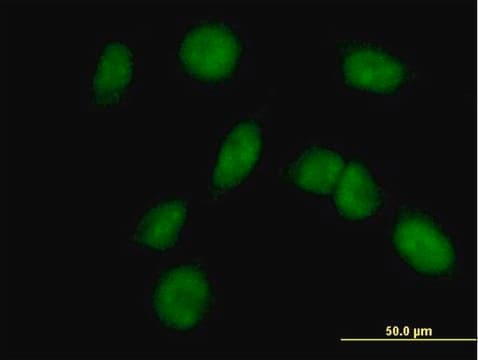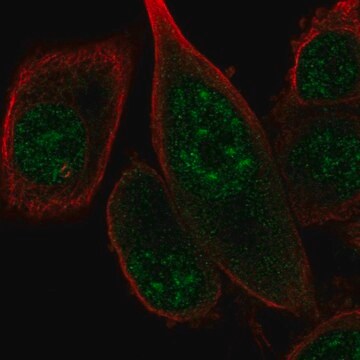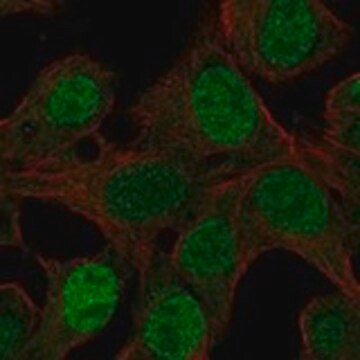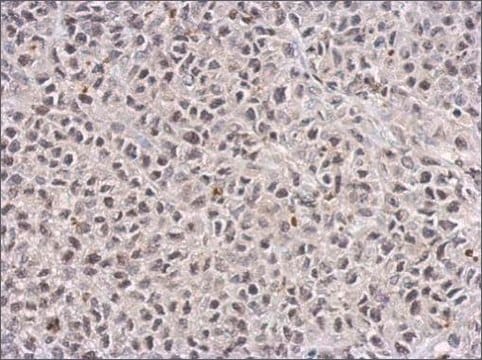MABC545
Anti-FANCM Antibody, clone CV5.1
clone CV5.1, 0.5 mg/mL, from mouse
Sinônimo(s):
Fanconi anemia group M protein, Protein FACM, ATP-dependent RNA helicase FANCM, Fanconi anemia-associated polypeptide of 250 kDa, FAAP250, Protein Hef ortholog
About This Item
Produtos recomendados
fonte biológica
mouse
Nível de qualidade
forma do anticorpo
purified immunoglobulin
tipo de produto de anticorpo
primary antibodies
clone
CV5.1, monoclonal
reatividade de espécies
human
concentração
0.5 mg/mL
técnica(s)
immunocytochemistry: suitable
Isotipo
IgG1κ
nº de adesão NCBI
nº de adesão UniProt
Condições de expedição
wet ice
modificação pós-traducional do alvo
unmodified
Informações sobre genes
human ... FANCM(57697)
Descrição geral
Imunogênio
Aplicação
Epigenetics & Nuclear Function
Apoptosis - Additional
Qualidade
Immunohistochemistry Analysis: A 1:100 dilution of this antibody detected FANCM in A431, HeLa, and HepG2 cells.
Dylight® is a registered trademark of Thermo Fisher Scientific.
Descrição-alvo
forma física
Armazenamento e estabilidade
Informações legais
Exoneração de responsabilidade
Não está encontrando o produto certo?
Experimente o nosso Ferramenta de seleção de produtos.
Código de classe de armazenamento
12 - Non Combustible Liquids
Classe de risco de água (WGK)
nwg
Ponto de fulgor (°F)
Not applicable
Ponto de fulgor (°C)
Not applicable
Certificados de análise (COA)
Busque Certificados de análise (COA) digitando o Número do Lote do produto. Os números de lote e remessa podem ser encontrados no rótulo de um produto após a palavra “Lot” ou “Batch”.
Já possui este produto?
Encontre a documentação dos produtos que você adquiriu recentemente na biblioteca de documentos.
Nossa equipe de cientistas tem experiência em todas as áreas de pesquisa, incluindo Life Sciences, ciência de materiais, síntese química, cromatografia, química analítica e muitas outras.
Entre em contato com a assistência técnica








